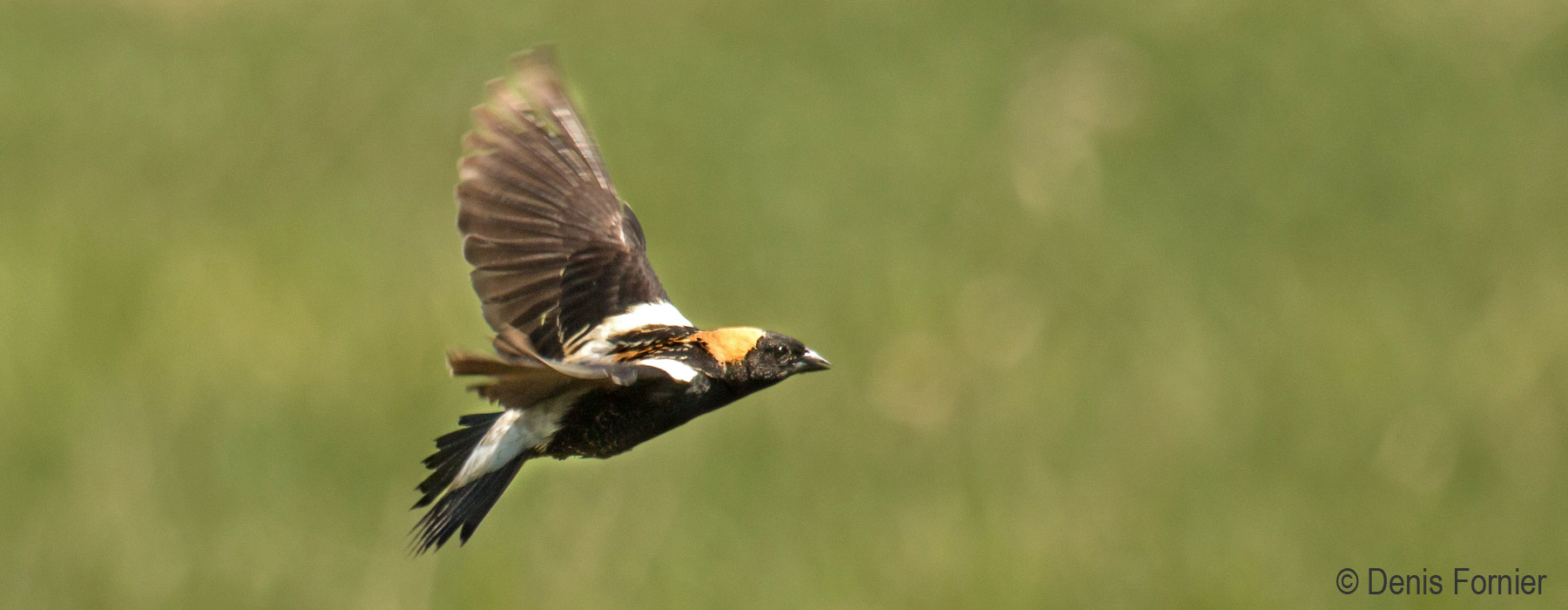One of the continent's signature grassland species, Bobolink has for decades been in steep decline. So VCE began to ask new questions and pursue pioneering research on behalf of this charismatic songbird.
VCE follows Bobolinks at virtually every stage of their life – from Canada to Argentina. VCE's Dr. Rosalind Renfrew was the first ornithologist to document, for example, the pesticide threats to flocks of Bobolinks, some exceeding 100,000 birds, on wintering grounds in South America. From there our work has only expanded. Here's how:
- Pesticides – VCE is analyzing the effects of monocrotophos, a pesticide known to be highly toxic to birds and commonly used on some Bobolink wintering grounds in South America.
- Bobolink Non-breeding Ecology – In the process of documenting Bobolink migration patterns, key stopovers, and wintering sites, Rosalind and her colleagues revealed an important fall stop in the Llanos of Colombia and Venezuela, where Bobolinks remain for 3-6 weeks before continuing south. Alongside partners Asociación Calidris, Renfrew will be venturing into little-explored regions of Colombia to learn about the habitats Bobolinks use during this stop, their status as crop pests, potential threats to the birds, and how they overlap with other migratory bird species such as the Dickcissel.
- Bobolink Population Structure – Renfrew is collaborating with the University of New Hampshire and the University of New England to determine to what degree populations of Bobolinks are related. Using blood samples collected across their breeding range – from New Brunswick to Oregon – they will assess how much the breeding populations are mixing. Results may inform the appropriate scale and focus for conservation actions to benefit the species. We will also analyze samples we collected from Bobolinks in the Galapagos in an attempt to determine where these few members of the population hail from on the breeding grounds; this will tell us where they are picking up avian malaria parasites that they bring to island-endemic bird species.
- Blood Parasites – With researchers at Louisiana State University, VCE helped to determine the locations where Bobolinks acquire “avian malaria” and pass it on to other birds in the Galapagos Islands.
- Effects of Haying on Midwest Grassland Birds – Led by researchers at the University of Wisconsin – Madison, VCE is helping to evaluate how the timing of disturbances such as haying impacts the breeding productivity of Bobolink and several other grassland bird species.
- Bobolinks and Climate Change – VCE collaborates with biologists at the University of Wisconsin to predict the effects of climate change on Bobolinks and on other grassland bird populations.

